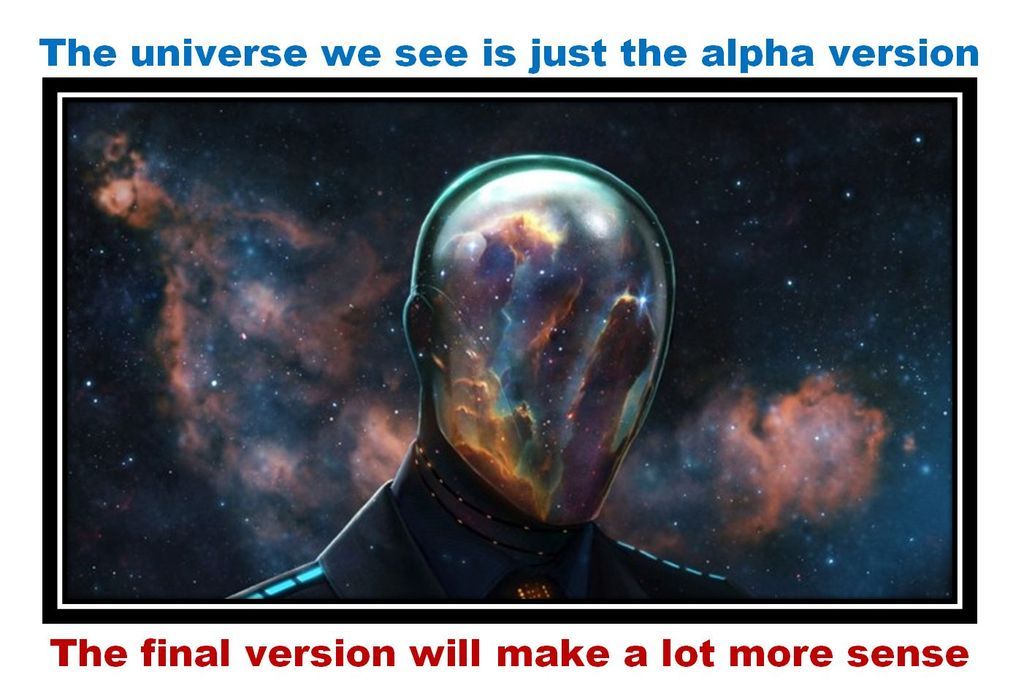mollwollfumble said:
So, what Stephen Baxter proposed was a virtual reality emulation that not just masked alien civilizations but also generated most of the stars we see with telescopes, including all the galaxies.
He proved that it wasn’t possible. At least not if the sphere of reality approached 100 light years.
(Side note, the cheapest and easiest way to hide the existence of alien civilizations is very much easier than this, just hypnotise a hundred or so important people. A single hypnotist could do it, for a negligible fee).
Now, suppose we’re in a planetarium, that immediately begs the question how small it could be. Obviously the smallest would be a virtual reality pod like in “the matrix”. Next step up would be a “Truman Show” size planetarium. Beyond that say a planetarium around the Earth. A Dyson sphere around the Earth coul have video projection screens around the inside.
Make the Dyson sphere porous in the sense that it would capture spacecraft, but continue to send out spacecraft emulation signals.
Of course, a key factor is pixel size. You may care to note that Baxter is wrong here, the number of pixels required is independent of the distance from the telescope to the Dyson sphere. That’s because all that matters is the telescope limit on angular resolution. You can calculate the number of pixels required for a perfect simulation directly from the telescope’s angular resolution.
Trying again.
Now let’s consider how to build a planetarium big enough to contain the real solar system. Toss in a non-periodic comet now and again to relieve the tedium, absorb a spacecraft now and again and keep sending signals you think the spacecraft would have produced.
A planetarium here on Earth typically has a single central projector and a white screen. But that’s very energy inefficient for an alien system. It’s a bad strategy both because of the loss die to the inverse square law between projector and screen and because of the scattering by the matt p[aint on the screen itself. That, like radar, gives an inverse fourth power for energy, which is awful.
Better is to have light emitted directly by the screen, that reduces the energy loss to an inverse square law, much better and, by having each pixel shining through a telescope operating backwards, a narrow beam of light is generated and no energy is wasted by having light shining in a direction other than Earth. A slow movement of telescopes around the Dyson sphere would be used to simulate the lateral motion of the stars, the proper motion and the parallax, the orbits of binary and multiple star systems. Timed to match the orbit of the Earth, the artificial parallax would be used to make the stars look much further away.
Now for galaxies. A more conventional projection screen would be used but, instead of a single central projector, use a single projector for each galaxy or galaxy cluster much closer to the screen, sited on a rigid framework. Don’t use matt paint on the screen, too inefficient, make the screen from cube corner reflectors that reflect the light back past the projector towards Earth.
What, you may ask, of other wavelengths? What of directly imaged exoplanets and nebulosities such as that associated with Mira? Other wavelengths are easy, detectors in orbit around Earth have low resolution and some (such as midrange UV) are blocked completely. For imaged exoplanets and nebulosities put a projector on the back of the appropriate telescope to display the desired image on the screen behind.
The challenges in that engineering scenario for an alien civilization are two. One is that it would be extremely difficult to build a Dyson sphere that large. The second is that telescope technology on Earth is advancing so fast at present. For example, the bright stars can be seen from Cassini at Saturn, so some projections have to face Saturn as well as Earth.


